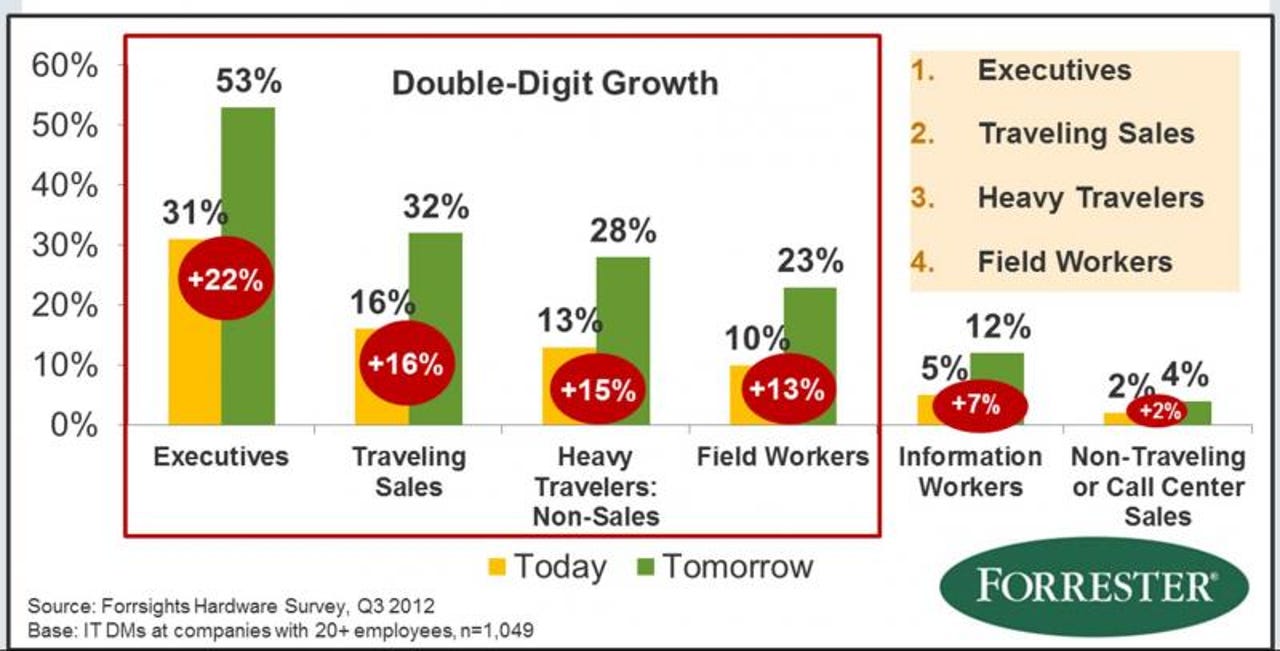Segmenting Your Workforce Will Actually Drive Innovation

It’s (long past) time to put the era of One Size Fits All enterprise computing behind us.Providing workers with Standard Issue™ devices and software represents an antiquated paradigm. Instead, segmenting your workforce into different classes of workers – honoring the needs of each type of worker – can help you:
- Save money. Overinvesting in computing power by giving a worker “too much machine” and over-investing in software licenses for applications that won’t be used are common implications of One Size Fits All enterprise computing. You can save money by provisioning appropriate hardware and software to various classes of workers.
- Preempt BYO. While IT departments are coming around to the virtues and values of BYO, managing excessively diverse BYO comes with management costs. You can preempt some types of BYO by providing the right tool to the right worker at the right time… obviating the need for them to bring their own.
- Drive worker productivity and innovation. Innovations like tablets and Chromebooks can empower certain classes of workers to achieve new levels of productivity. Providing the right worker – for example, a traveling salesperson – with a tablet can enable new scenarios and create tangible returns.
Tablets are driving new interest in workforce segmentation. When we asked IT decision makers whether tablets would provisioned for general employee use, only 15% agreed. But when we asked IT decision makers which roles they would consider offering tablets as standard issue devices today, and which roles they would likely offer tablets tomorrow, specific classes of workers emerged as tablet-empowered:

According to IT, executives lead the pack with double-digit growth, followed by traveling sales, heavy travelers, and field workers. All of these groups will see swift increases in tablets. But for non-traveling sales and the vast majority of information workers, tablets won’t be standard issue devices. Tablets are being distributed on a value basis, not as a universal standard issue.
Segmenting the workforce this way can lead to segment-specific innovations. I spoke with the VP of Infrastructure and Operations for a global company that sells many of its products via consumer retail. The company employs a large sales force that visits thousands of retail locations in Asia. They developed a custom tablet application that fundamentally changed these salespeople’s visits to retail: With the tablet app, a salesperson goes into a retail store location and takes photos, allowing them to assess inventory counts, the accuracy of displays, etc. Most interestingly, the app uses location tagging. This tagging isn’t merely used to judge whether salespeople are doing their jobs or not (though it is). Instead, it’s generating big data in the background: Let’s say a specific SKU isn’t selling in a particular region. Data analytics derived from the location tags, in relation to the other data, now helps this enterprise to diagnose problems with its channels and products. Sales visits using tablets generate an entirely different set of information, meaning the company can solve its business problems much more effectively.
Without a segmented device strategy (providing tablets to salespeople) and an app strategy (designed specifically for the sales role), the company wouldn’t be gaining this business value. And it all started by departing from One Size Fits All computing.